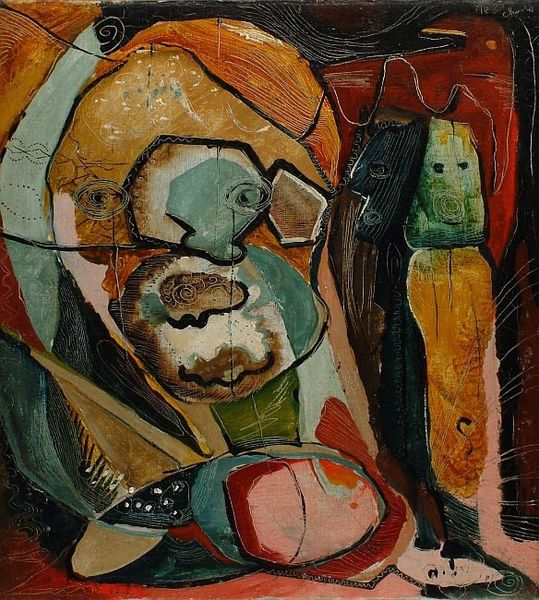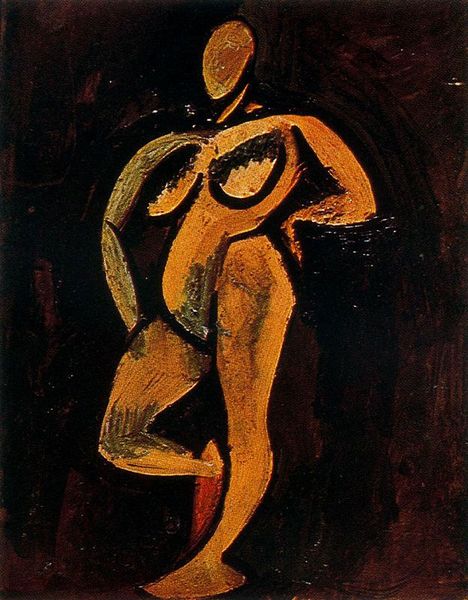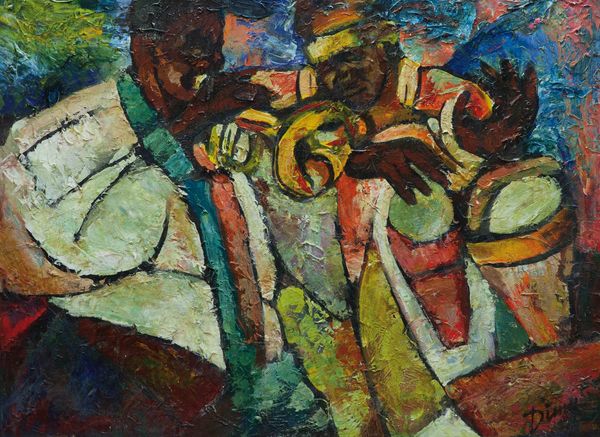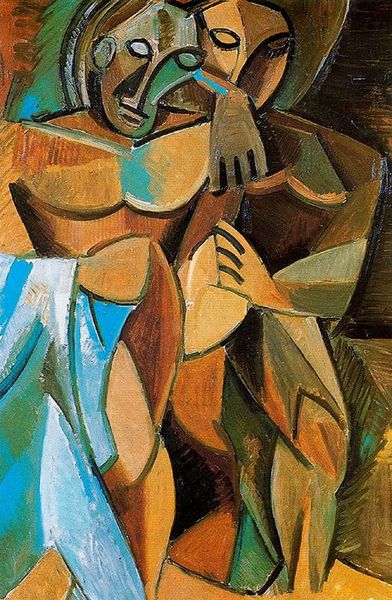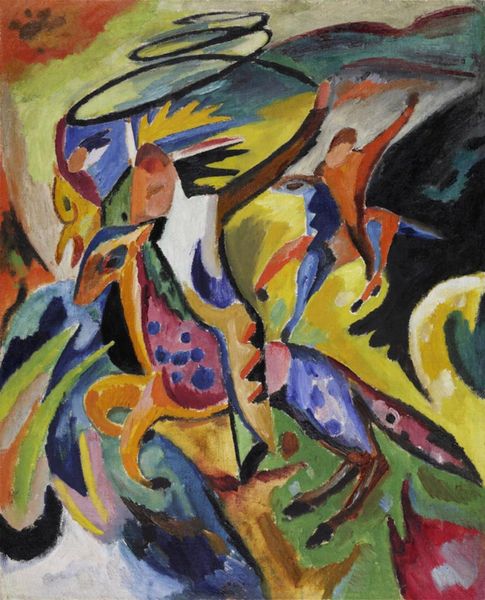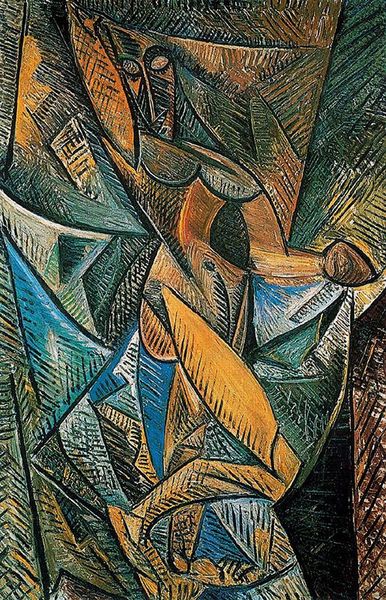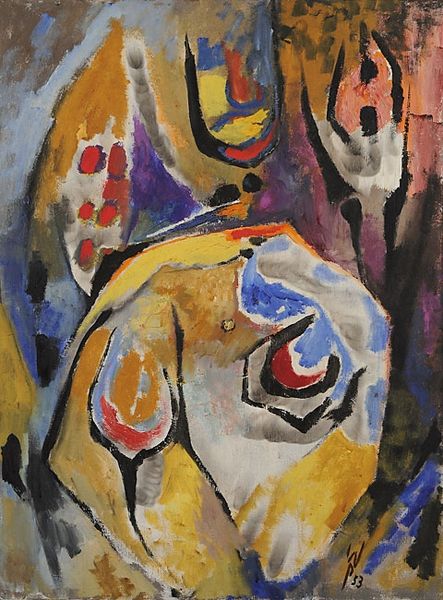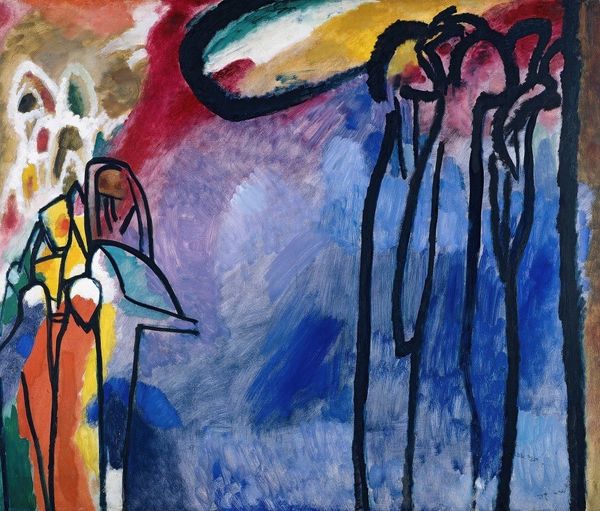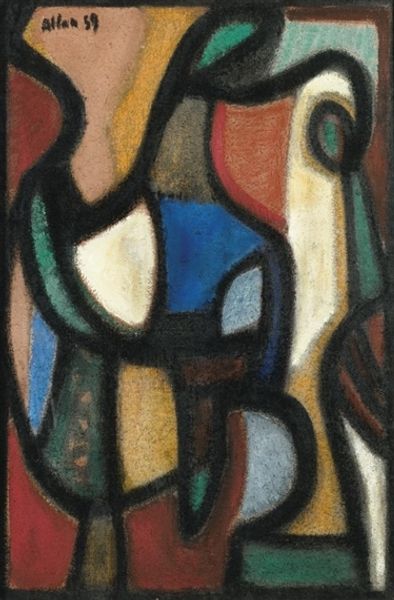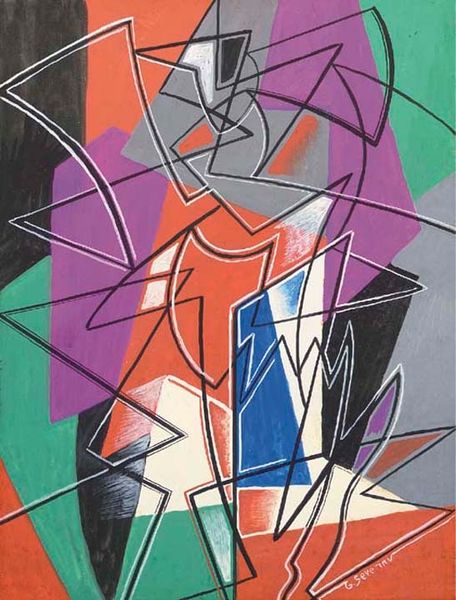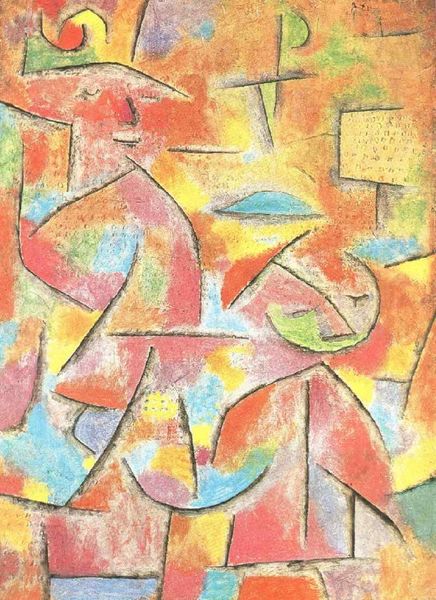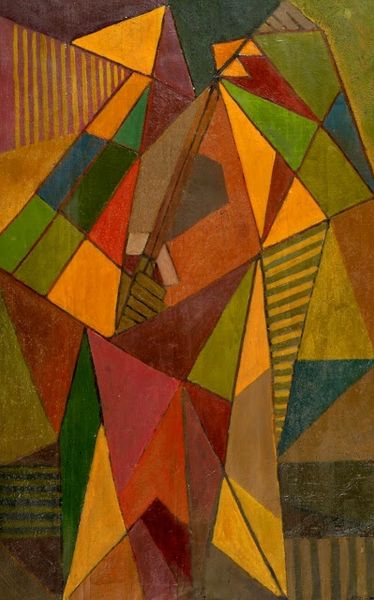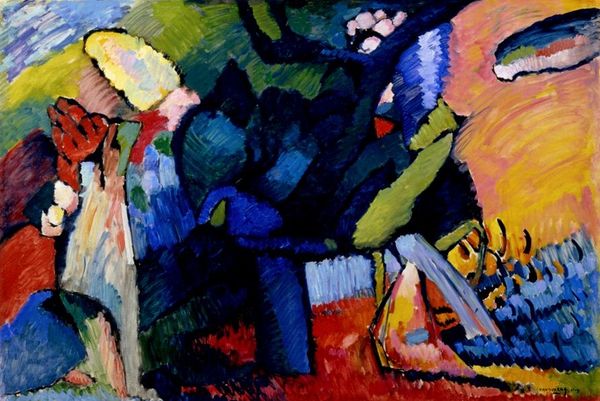
painting, oil-paint
#
portrait
#
cubism
#
fauvism
#
art-nouveau
#
painting
#
oil-paint
#
figuration
#
oil painting
#
female-nude
#
geometric
#
nude
#
modernism
Copyright: Public domain US
Curator: We're now looking at Pablo Picasso's "Nude with Raised Arms (The Avignon Dancer)," an oil on canvas completed in 1907. Editor: There's an unsettling intensity to it, isn’t there? The fragmented planes, that mask-like face, it feels raw and primal, a complete breakdown of classical forms. Curator: Absolutely. The geometric construction and distortion of the figure indicate the beginnings of Picasso’s experiments with Cubism, with influence also derived from Fauvism. The materials he uses, the very viscosity of the oil paint, becomes part of the expression. The roughness emphasizes its rejection of academic tradition. Editor: I'm curious about that very direct application of paint. There's a sense of speed and urgency, a clear engagement with materiality. What kind of canvas was used? And where did he source his pigments? Understanding those details adds to the historical weight. Curator: Specifics on the canvas and exact pigment origins are difficult to pinpoint definitively. What is clear, though, is how Picasso treats the picture plane as a fractured space; notice how the contours interact. The dark outlining amplifies the tension. Editor: Precisely. Thinking about art in its context reveals not just artistic ambition but socio-economic conditions, access to resources, the whole machinery behind the artwork itself. Who made his canvases? Were they locally sourced? The relationship with artisans, if there were any, needs emphasis. Curator: The emphasis, for me, remains rooted in the visual language—how Picasso synthesizes influences ranging from Iberian sculpture to non-Western art, translating them into a unique pictorial vocabulary. The impact on subsequent avant-garde movements cannot be overstated. Editor: That tension between high art aspiration and more rudimentary construction techniques offers a powerful framework. Appreciating both pushes past conventional analysis to connect with social layers. Curator: It challenges the way we see, forces us to reconsider the very definition of beauty and representation. The rawness speaks volumes, wouldn't you say? Editor: Definitely. When considering all aspects from production to subject matter, the artwork's message gets louder and deeper, providing an important historical anchor.
Comments
No comments
Be the first to comment and join the conversation on the ultimate creative platform.

